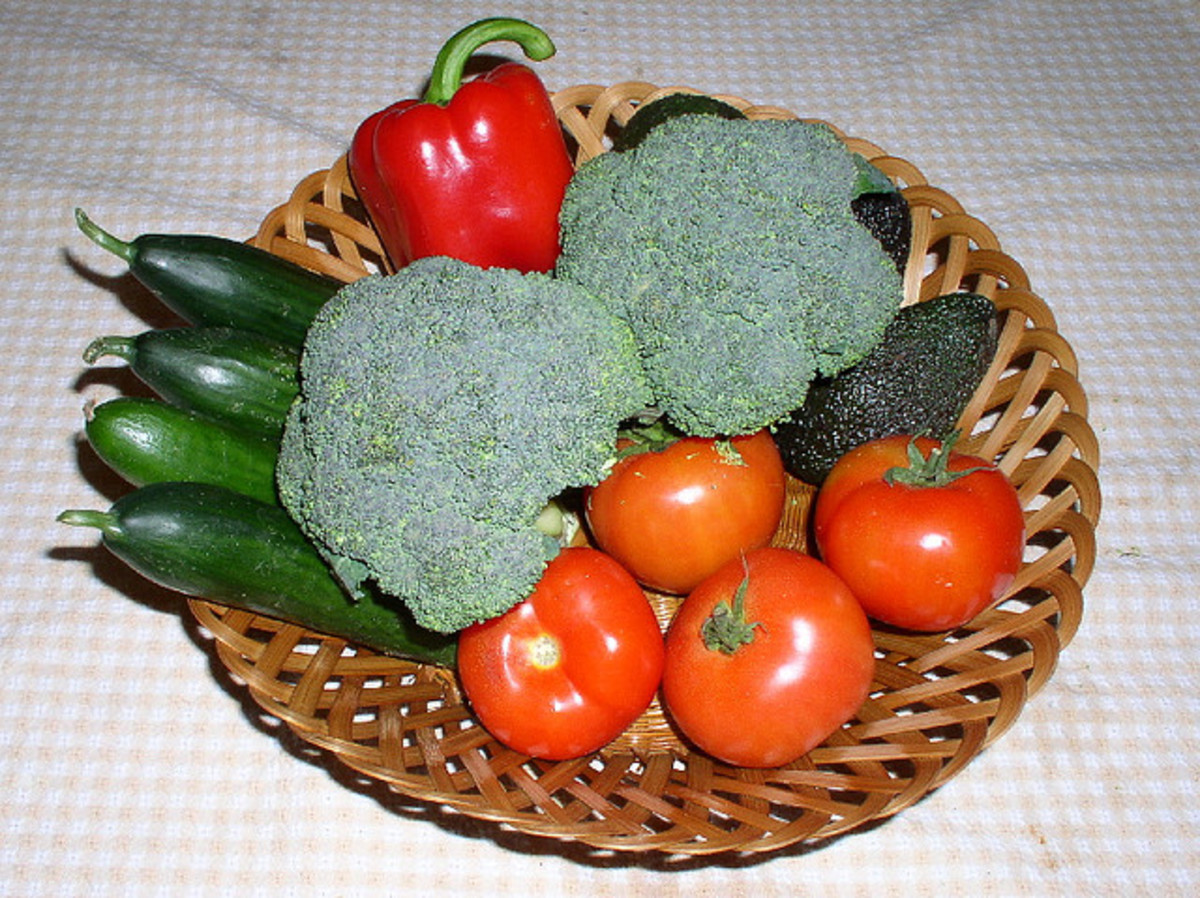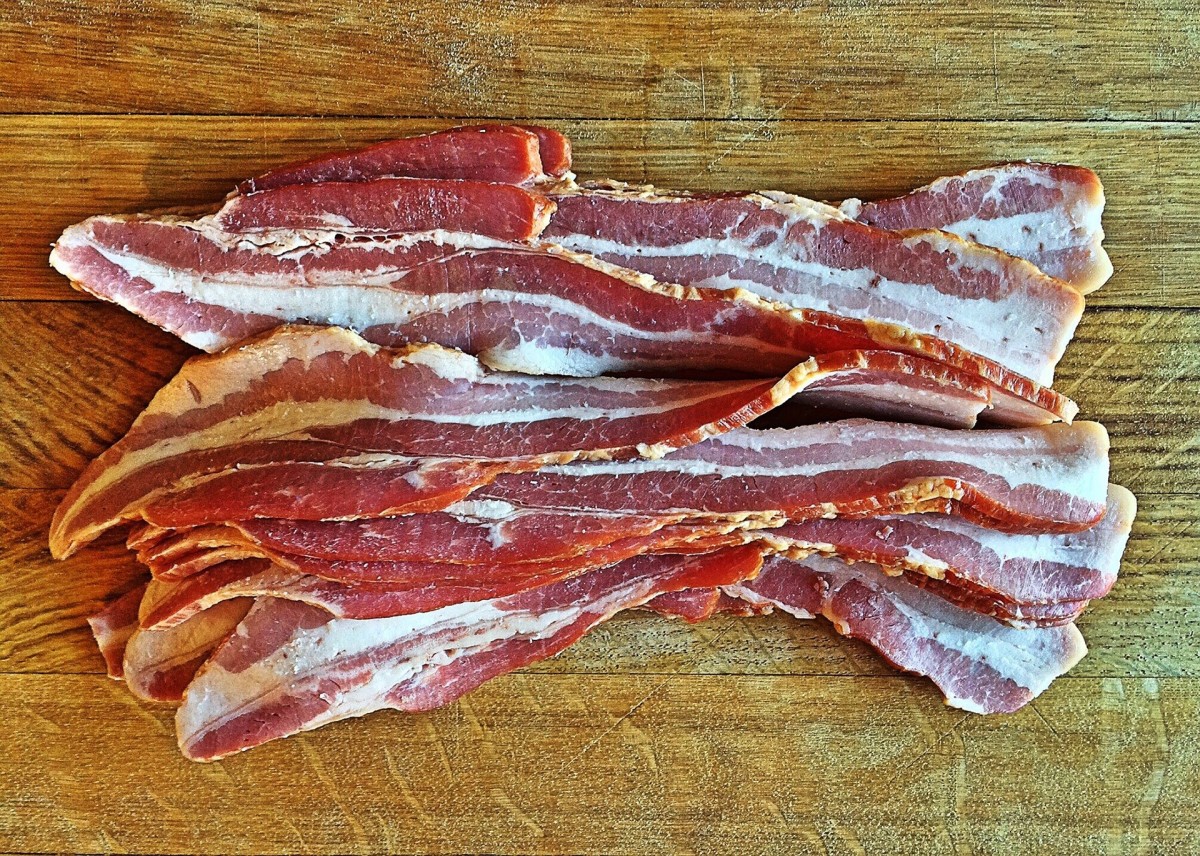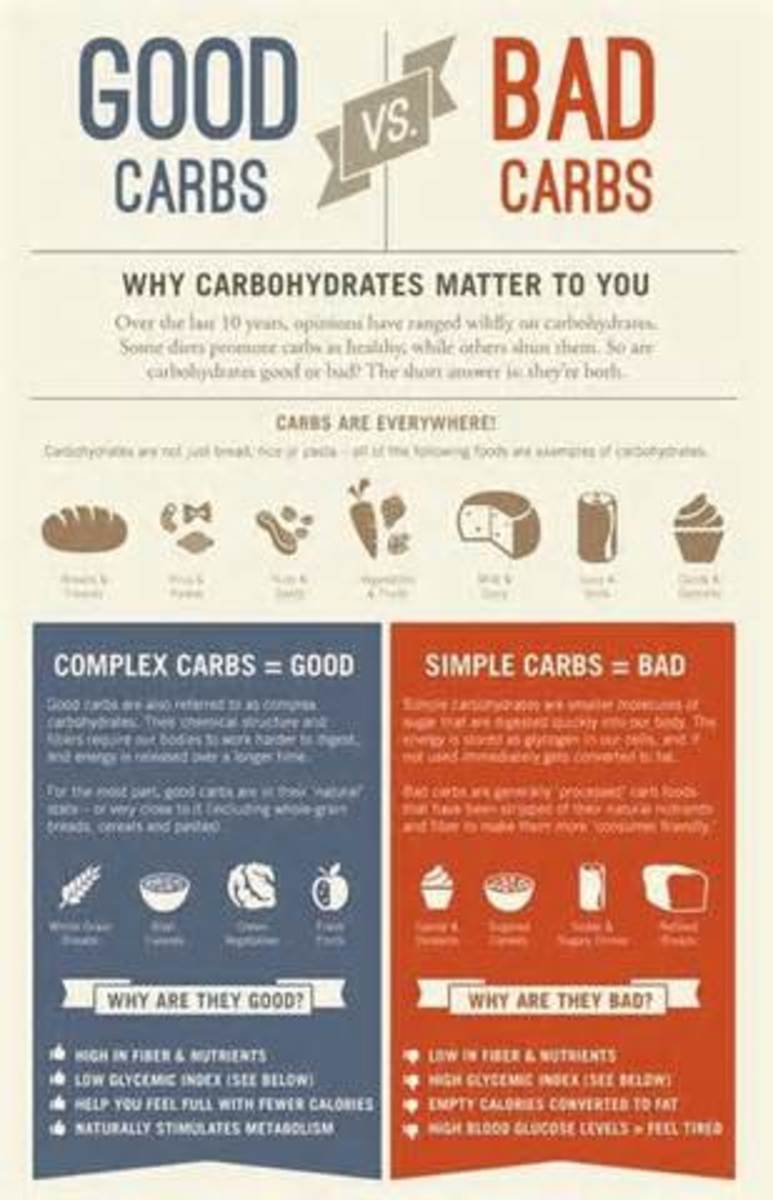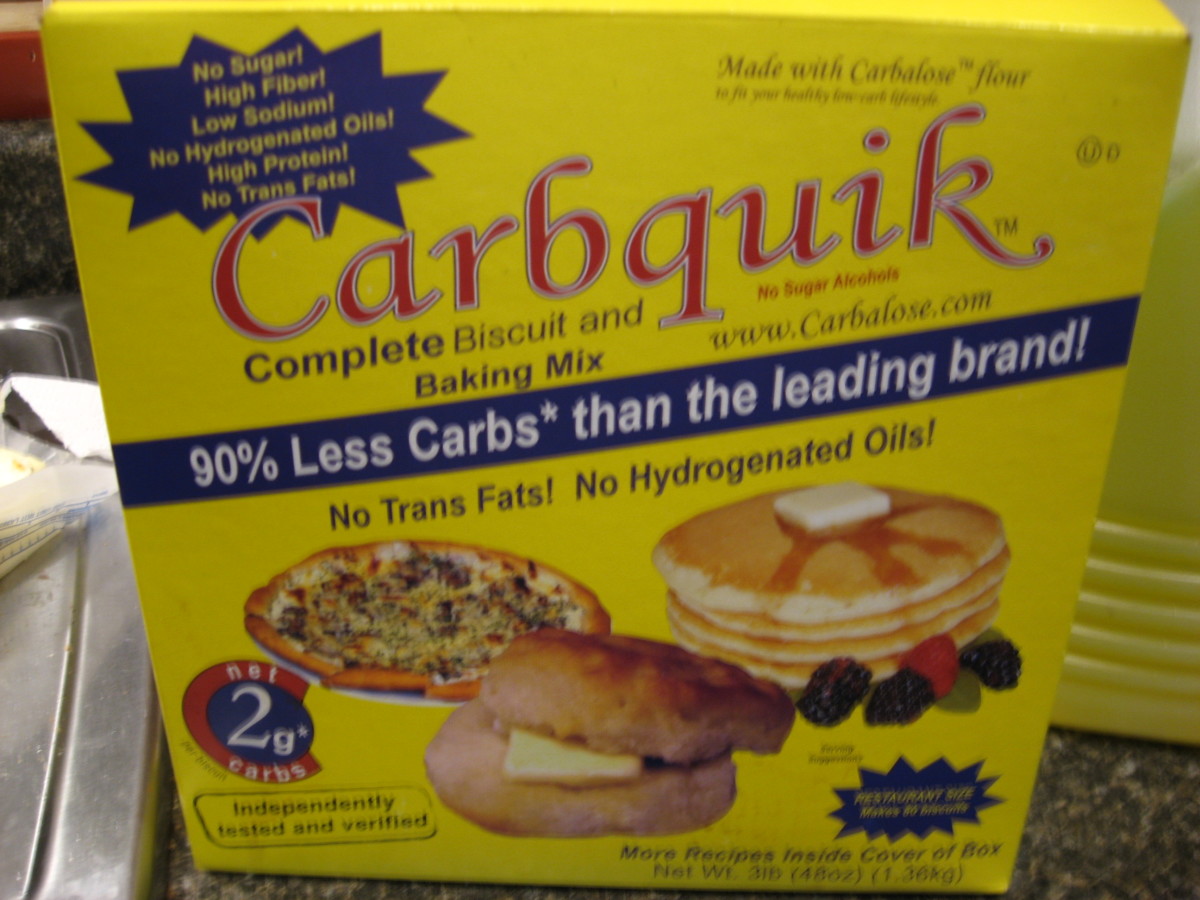Have You Ever Heard of these 21 Super-Healthy Foods?
Who put me on this list? The crocodile?

Did you know there are 21 super healthy foods you have probably never heard of that contain extra-potent quantities of the vitamins and minerals you need every day? And they come with a bonus - searching for them in your favorite supermarket or health store will help you burn up calories..
1- Alligator. I know you've heard of alligator meat but did you know it is extremely popular with chefs and cooks in the Deep South? Why? Because the meat has a soft, tender texture much like veal, and a neutral flavor that works well with spices and hot sauces. The alligator is native to the United States and China. Interesting fact: South Florida is the only location where alligators and crocodiles live side by side (and I'm not referring to condo dwellers). Eating alligator meat is like getting the best of surf and turf in one meal. It’s rich in omega-3 fatty acids and contains more muscle-building protein than beef or chicken. To prepare, rub each pound of gator with two tablespoons of blackening seasoning, and cook over high heat on a grill or in a cast-iron skillet.
2- Açai Berries. Açai (pronounced ah-sah-ee) berries grow on tall, slender palm trees in Central and South America. They look like purple-black grapes and taste a little like chocolate blueberries. That description alone is enough for me. You may have heard of them because they have been marketed widely all over the planet as a dietary supplement that does everything but power your car. Those hyped-up claims are totally unverified. Just because a juice is açai-flavored does not mean it contains any substantial amount of actual açai juice. Recent studies discovered that açai berries contain higher levels of antioxidants than blueberries and pomegranates. A University of Florida study found that an açai extract triggered a self-destruction response in 90% of the leukemia cells it came in contact with - an extremely promising finding for scientists working to cure cancer. If you don't want to fly to Brazil for the berries, you can get the benefits by drinking Bossa Nova Açai Juice available at Whole Foods Market and health food stores.
3- Amaranth or Pigweed. This nutrient-packed grain is native to the Americas and was a staple of both the Incas and the Aztecs The grain-like seeds have a mild, nutty taste. Gram for gram, few foods can compete with amaranth’s nutritional portfolio. It’s higher in fiber and protein than wheat and brown rice, it’s loaded with vitamins, and it’s been shown in studies to help lower blood pressure and harmful LDL cholesterol. You can find this super seed at Whole Foods Market. Amaranth cooks just like rice, but it’s even more versatile. Serve it with chicken or steak, or with apples, almonds, and feta cheese as an extraordinary salad.
4- Aronia Berry or Chokeberry. Once revered by Native Americans as a miracle fruit, this tiny, tart berry has resurfaced as a super-food. No fruit packs more anthocyanins – a potent cancer-fighting antioxidant that lends the berry its deep purple color. It has been shown to fight cardiovascular disease, chronic inflammation, and even liver damage in rats. Juice from the blackberries is astringent and not sweet but high in vitamin C and antioxidants. The red berries are more palatable and can be eaten raw or as a jam. Pass the peanut butter, please.
5- Fenugreek. This tangy, curry-scented herb is used in many tasty Indian dishes. That's Indian as in India. Several studies show that fenugreek can help regulate blood sugar. Scientists think it may lower your blood-sugar response after a meal by delaying stomach emptying, which slows carbohydrate absorption and enhances insulin sensitivity. Fenugreek is a component of most curry powders. You can also mix a teaspoon of pure fenugreek powder into beef stew to jump-start the flavor, or add whole seeds to a rice dish to create an exotic Southeast Asian-style pilaf.
6- Hemp Seed Nuts. Similar in taste to sunflower seeds, these nuts are derived from hemp seeds, which are also used to grow cannabis. Yes, I know you know what that is. By weight, hemp seed nuts provide more high-quality protein - six grams per tablespoon - than even beef or fish. Each nut is also packed with heart-healthy alpha--linoleic acid. You can find these nuts in your local health-food store or in the natural products section of your grocery store. Enjoy them right from the bag, or sprinkle a handful on salads or in your morning oatmeal.
7- Goldenberries. These tangy, dark yellow berries are grown in South America where they are sold fresh or made into preserves. In the U.S., you’re more likely to find the fruit dried and bagged. One serving of dried goldenberries contains four grams of protein and five grams of fiber. They’re also a great source of vitamin A and disease--fighting antioxidants. You can find them at Whole Foods Market. Snack on the dried berries alone just as you would raisins, or toss a handful on a salad or your breakfast cereal.
8- Holy Basil. This popular Indian herb, also known as tulsi, is the ideal ingredient for adding flavor into almost any meal. Animal studies have shown that natural chemicals in holy basil may help fight diabetes, heart disease, and cancer. You can find it at Asian specialty stores and farmers’ markets. If you are short on time, try fresh sweet basil that is available at your local grocery store. Chop up a healthy dose of the herb and scatter it on scrambled eggs, soups, or stir-fried dishes.
9- Kefir. Similar to yogurt, this fermented dairy beverage is made by culturing fresh milk with kefir grains. Because kefir contains gut-friendly bacteria, it’s been shown to lower cholesterol, improve lactose digestion, and enhance the immune system. In addition, University of Washington scientists recently demonstrated that kefir was more effective than fruit juice or other dairy beverages at helping people control hunger. Look for kefir in the refrigerated health-food section of your local supermarket, or in the dairy aisle of health-food stores. Pour a glass for a light breakfast, a sweet snack, or as a milk shake substitute for dessert.
10- Jicama. Jicama (HE-kuh-muh) is a Central American root vegetable that looks like a potato or a turnip but is juicy and slightly sweet. One cup contains just 49 calories and is loaded with six grams of fiber. It also packs a hefty dose of vitamin C. Find it in the produce sections of high-end supermarkets like Whole Foods and Fresh Market. You can either slice it and eat it raw or boil it like a potato until soft.
11- Kamut. This cousin of durum wheat was once considered the food of pharaohs. It’s now embraced by us mere mortals as an alternative to brown rice. Kamut has higher levels of vitamin E and heart-healthy fatty acids than most grains. It also has up to 40% more protein than wheat. To prepare, boil it in water for up to an hour, until the grains are tender. Drain and toss with sautéed vegetables, a dash of soy sauce, and a squeeze of lemon.
12- Lemongrass. Grown primarily in warm climates like tropical Asia, this exotic grass exudes a lemon flavor after the stalks are chopped. Lemongrass is loaded with antioxidants, which help protect against oxidative stress, one of the leading causes of heart disease and cancer. In a stir-fry, start with one-half tablespoon each of minced garlic, grated ginger, and minced lemongrass. Add vegetables, chicken, and soy sauce for a tasty meal.
13- Mung Beans. Commonly eaten in China and India, these beans have a tender texture and a sweet, nutty flavor. They are high in potassium, iron, and fiber, and also contain 24% protein. Unlike many other legumes, mung beans retain most of their high -levels of vitamin C even after they are cooked. To serve, boil dried mung beans until tender and add them to your next salad. Their natural sweetness will add flavor without piling on either extra calories or sodium.
14- Nori. This algae is popular in Japanese cuisine - you’ll recognize it as the dark wrap holding your spicy tuna roll together. It adds a slightly salty, mineral flavor to soups, salads, and sushi. High in fiber and protein, nori also contains a triple dose of cancer fighters, including phytonutrients called lignans, which have been shown to help prevent tumor growth. Look for it in the international section of your market. Use it to roll your own sushi, or for instant use, grind pieces in a coffee grinder and use the powder as a salt substitute to season dishes.
15- Sardines. I know you know that this oily fish is a top source of omega-3 fats, rivaling even salmon. But did you know it also is packed with bone-building calcium? Research shows that omega-3 can improve everything from your cholesterol profile to your mood to your ability to ward off Alzheimer’s. Look for sardines packed in olive oil. You can eat them straight from the can, but for a more sophisticated approach, wrap a sardine around an almond-stuffed olive. Or you can chop sardines and stuff them inside a peppadew pepper.
16- Peppadew Peppers. This sweet and spicy fruit looks like a cross between a cherry tomato and a red pepper. Native to Africa, they’re popular with chefs in the United States. One-third cup of peppadews packs heart-protecting vitamin B-6, cancer-fighting lycopene, and a day’s worth of vitamin C. You can find this fruit in the salad section of upscale grocers. They are great tossed in a salad with avocado and almonds or in a simple pasta with olive oil and garlic. The compact peppers are also perfect for stuffing: For a killer snack or appetizer, try filling them with a hunk of fresh mozzarella or goat cheese.
17- Sunflower Greens. These crunchy, nutty-tasting sprouts arise when sunflower seeds are grown in soil for about a week. They contain much of the heart-healthy fat, fiber, and plant protein found in sunflower seeds, but with fewer calories. You can find the greens in your local farmers’ market or in the produce section of higher-end grocery stores. Wash the greens thoroughly, then drizzle olive oil and sprinkle sea salt on them for a simple and crunchy side dish, salad, or bed for grilled chicken. Use them as a substitute for every-day lettuce on your sandwiches.
18- Sweet-Potato Leaves. Typically discarded, sweet-potato leaves are poised to become the next big health-food craze. Why? Because sweet-potato leaves are one of the world’s richest sources of disease-fighting antioxidants, according to a new report from the University of Arkansas. They are packed with at least 15 different types of healthy compounds that help fight diabetes, heart disease, bacterial infections, and various forms of cancer. You can find them in an Asian or specialty grocery store, or at your local farmers’ market. Sauté a handful of the thoroughly washed leaves with onions, garlic, and ginger to create a super-healthy stir-fry base. Then add other vegetables together with beef, chicken, or shrimp. Ummmm, ummmm, ummmm.
19- Watercress. This leafy green, a member of the cabbage family, has a light, peppery flavor. One cup of watercress has only four calories, but it’s loaded with vitamins A, C, and K. What’s more, it contains lutein and zeaxanthin, antioxidants that are beneficial for eye health. Replace the lettuce on your next sandwich with watercress, or toss a bowl of the leaves with goat cheese, toasted pistachios, and your favorite vinaigrette dressing.
20- Rooibos Tea. Rooibos (ROY-bus) is a vibrant red tea made from a South African legume. The tea is caffeine-free and also naturally sweet, so you won’t need to add sugar. Rooibos is loaded with disease-fighting antioxidants and has been shown to boost the immune system. In fact, a recent Japanese study on mice and rats suggests that rooibos tea may help prevent both allergies and cancer. Look for Celestial Seasonings rooibos teas in your local grocery store. For a healthy change, brew a cup of roolbos tea to start your day instead of coffee.
21- Yerba Maté. A plant native to Argentina that is used to make a tea-like infusion, maté (MAH-tay) has an herbal taste and half the caffeine of coffee. It is much like green tea on steroids with up to 90% more powerful cancer-fighting antioxidants, a cache of B vitamins, and plenty of chromium, which helps stabilize blood-sugar levels. Plus, its bolstering effect on metabolism is so valued that many diet pills list maté as an ingredient. For the strongest dose of maté’s medicine, buy it in loose-leaf bags. Bottled maté products are becoming more commonplace in large supermarkets. and you can find flavored varieties at your local Whole Foods Market.
You already know about the amazing properties of dark chocolate with more than its share of antioxidants. But did you know it is one of the four basic food groups? The other three? Milk chocolate, white chocolate and chocolate with almonds.
You can learn more about chocolate at my hub: Chocolate Benefits.
© Copyright BJ Rakow 2011. All rights reserved. Author, "Much of What You Know about Job Search Just Ain't So." A serious book about job search written with a light touch.
You will want to read these, too . . .
- Obesity is Widespread
Dieters live life in the fasting lane. Im going to jump feet-first into the low fat vs. low carb diet controversy and let you know what I discovered. - MSG and Fat Rats and Us
Could there be some chemical in our food that may be causing this tremendous obesity epidemic in the U.S.? - Burn Off Fat with Fatostatin
A new man-made chemical, fatostatin, prevented mice from gaining weight even when they ate whenever they wanted.









